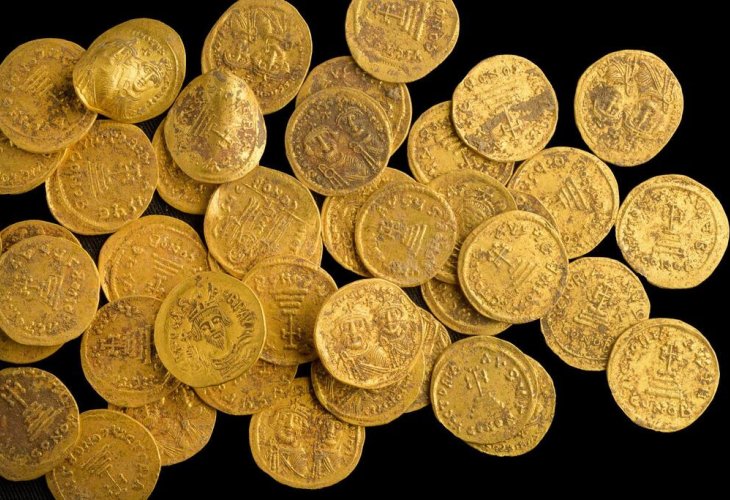Ancient Gold Coins Discovered: A Glimpse Into a Changing Era
A treasure trove of 44 pure gold coins, dating back 1,400 years, was unearthed at Banias, revealing a moment from the time the Byzantine Empire fell to Muslim caliphs.
 (Photo: Dafna Gazit, Israel Antiquities Authority)
(Photo: Dafna Gazit, Israel Antiquities Authority)A remarkable discovery of 44 pure gold coins was recently made at the Banias site, located within the Hermon Stream Nature Reserve, during an excavation by the Israel Antiquities Authority. The coins, which depict portraits of various emperors, are dated to the period when the Byzantine Empire was conquered by the Muslim caliphs.
Dr. Yoav Lerer, who directed the excavation for the Israel Antiquities Authority, remarked, "The hoard, weighing about 170 grams, was concealed at the base of a wall constructed with ashlar stones during the conquest of the Land of Israel by the Umayyad caliphs. This find offers us a snapshot in time where one can almost visualize the person hiding their valuables in fear of the conflict, hoping to return one day to retrieve their possessions. Today, we know that luck was not on their side."
The excavation, conducted in the northwestern residential quarter of the ancient city of Banias, uncovered building remains, channels and pipes for water transportation, a kiln used for creating ceramics, and numerous small finds including fragments of pottery, glass, metal, and bronze coins. These coins are dated to the end of the Byzantine period (about 1,380 years ago) and the early Middle Ages (about 800 years ago).
Eli Escusido, Director of the Israel Antiquities Authority, stated, "This is a significant hoard with immense archaeological value for the study of Golan settlement history. It is a treasure from a transitional period, one of the most crucial times in the development of the city of Banias. The Israel Antiquities Authority, in coordination and cooperation with the Israel Nature and Parks Authority, will work to present this treasure to the public."

